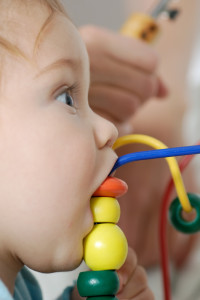For almost 30 years, the U.S. PIRG Education Fund has conducted an annual survey of toy safety, which has led to an estimated 150 recalls and other regulatory actions over the years. It has also helped educate the public about policymakers on the need for continued action to protect the health and well being of children.
In the 2014 report, the organization discovered numerous choking hazards found in toys and children’s products and five toys with concentrations of toxins exceeding federal standards.
Standards for toy safety are enforced by the Consumer Product Safety Commission (CPSC) and include limits on toxins in children’s products, size requirements for toys for small children, warning labels about choking hazards, measures to keep magnets and batteries inaccessible, and noise limits.
After examining hundreds of toys to evaluate their safety, the U.S. PIRG has discovered numerous unsafe materials commonly found in toys that still remain widely present in the marketplace.
These potential hazardous materials include:
Lead
Even low lead exposure of lead can lead to undermine development, damaging academic achievement and attentiveness.
Chromium
Skin contact with chromium may cause severe allergic reactions – including skin redness, swelling and ulcers. It has also been known to cause cancer.
Small parts
Children, especially those under the age of three, can easily choke on small parts. Certain size requirements are placed on toy packaging to help indicate the appropriate age for the toy. Parents should pay close attention to this number, as some products may contain small choking hazards.
Small balls
According to safety regulations, if a ball is smaller than 1.75 inches in diameter it can be a choking hazard for children under the age of three. As with small parts, parents should be cautious about this as well.
Balloons
Balloons can easily be inhaled in attempts to inflate them and can become suck in children’s throats. In fact, balloons are responsible for more choking relating deaths among children than any other toy or children’s product. The recommended age for balloons is eight and above.
Magnets
When two or more powerful magnets are swallowed, they can have fatal health consequences as their attractive forces draw them together inside the body, perforating intestinal walls.
Batteries
When batteries are ingested, chemical reactions can burn through the esophagus and blood vessels, causing fatal internal bleeding. To help prevent this, batteries in children’s toys should not be easily accessible.
Excessive noise
Excessive noise exposure can lead to temporary or permanent hearing loss, which is especially problematic for young children. Hearing loss at an early age has ramifications for speech development.
With the holiday season fast approaching, make sure you actively read all of the guidelines and fine print on children’s toy before purchasing them. Precautionary measures like this can help you save your child’s life as well as trips to the emergency room or urgent care unit.
This time of year should also serve as a reminder to make sure your health insurance policy provides the adequate amount of coverage for you and your family needs.













